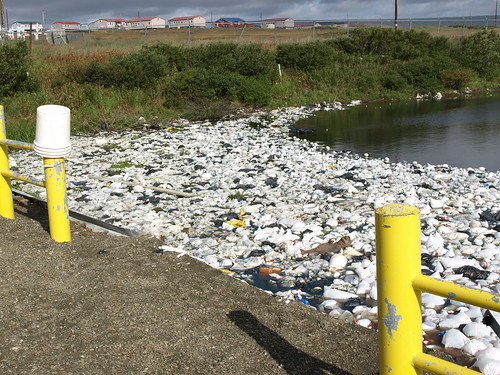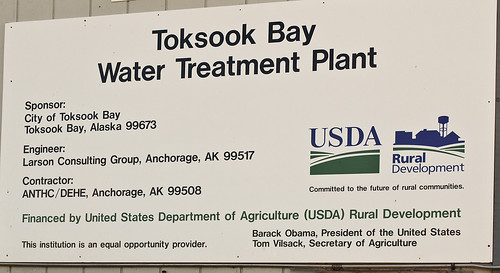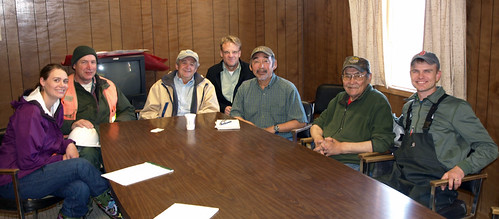Many communities in remote rural Alaska are only accessible by plane or boat and essentially inaccessible during the long, hard winters. They lag far behind the lower 48 states in having safe and dependable drinking water and suitable waste disposal systems available. The Rural Alaska Village Grant (RAVG) program supports the development and construction of water and wastewater systems to correct dire health and sanitation conditions in those villages. I had the recent opportunity to accompany USDA Water and Environmental Program RAVG Manager Tasha Deardorff and other program partners on site visits of two such remote rural communities to check the status of current projects.
It’s nearly 400 miles from Anchorage to Bethel, the regional hub. Our first destination from Bethel was the remote Native village of Toksook Bay some 114 miles away. We were greeted by a resident who transported us via four-wheeler (all terain vehicle) to the city office.

Rural Development representatives, along with program partner Alaska Native Tribal Health Consortium (ANTHC), met with Mayor Larry John and City Administrator Paul Chimiugak. The intent of the meeting was to discuss the on-going and future water and sewer projects necessary to help provide residents that currently haul water and wastewater with healthy and safe sanitation systems. Along with partners and the State of Alaska, the USDA and ANTHC funds water and wastewater systems across the state.
ANTHC Project Manager Shad Schoppert said about the project, “Studies have shown that children who live in communities with limited access to water are five times more likely to be hospitalized for lower respiratory infection and 11 times more likely for pneumonia. Thanks to the funding provided by the Rural Alaska Village Grant program under USDA Rural Development, 21 homes will have piped water and sewer service by 2015. This level of sanitation service will provide these residents with improved health to people who currently self-haul waste in five gallon buckets and collect rain for drinking water.”

After our meetings, we traveled to Tununak, wich is located about 10 miles from Toksook Bay. We were greeted by Greg Magee, Manager of the Village Safe Water Program for the State of Alaska Department of Environmental Conservation and and James James, Tribal Administrator.
USDA funds will be utilized to prepare an environmental report and prepare a business plan for providing water and wastewater services. A separate water source study will also be completed. Nearly all the residents in Tununak haul their drinking water. There are approximately 87 homes of which six have functioning water and sewer haul services. These residents haul their own water to their homes and use buckets to dispose of waste in below grade sewage lagoons. With USDA support, that will soon change for the better.
To learn more about USDA investments in Alaska, click here. To read more about how USDA partners with other Federal agencies and the State of Alaska to improve water quality for rural Native residents click here. To read more about recent USDA investments in rural water and sanitation projects in Alaska click here.

